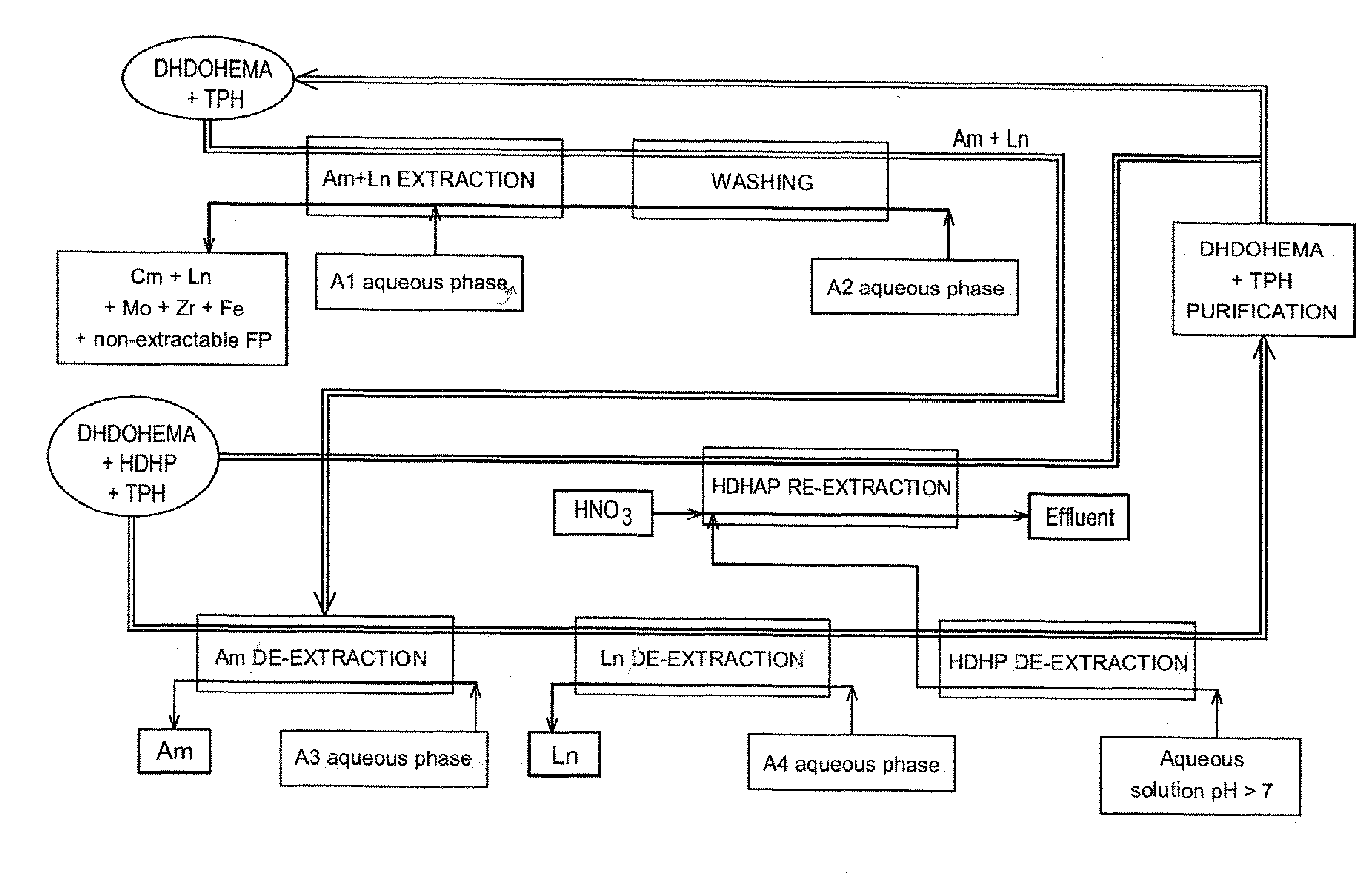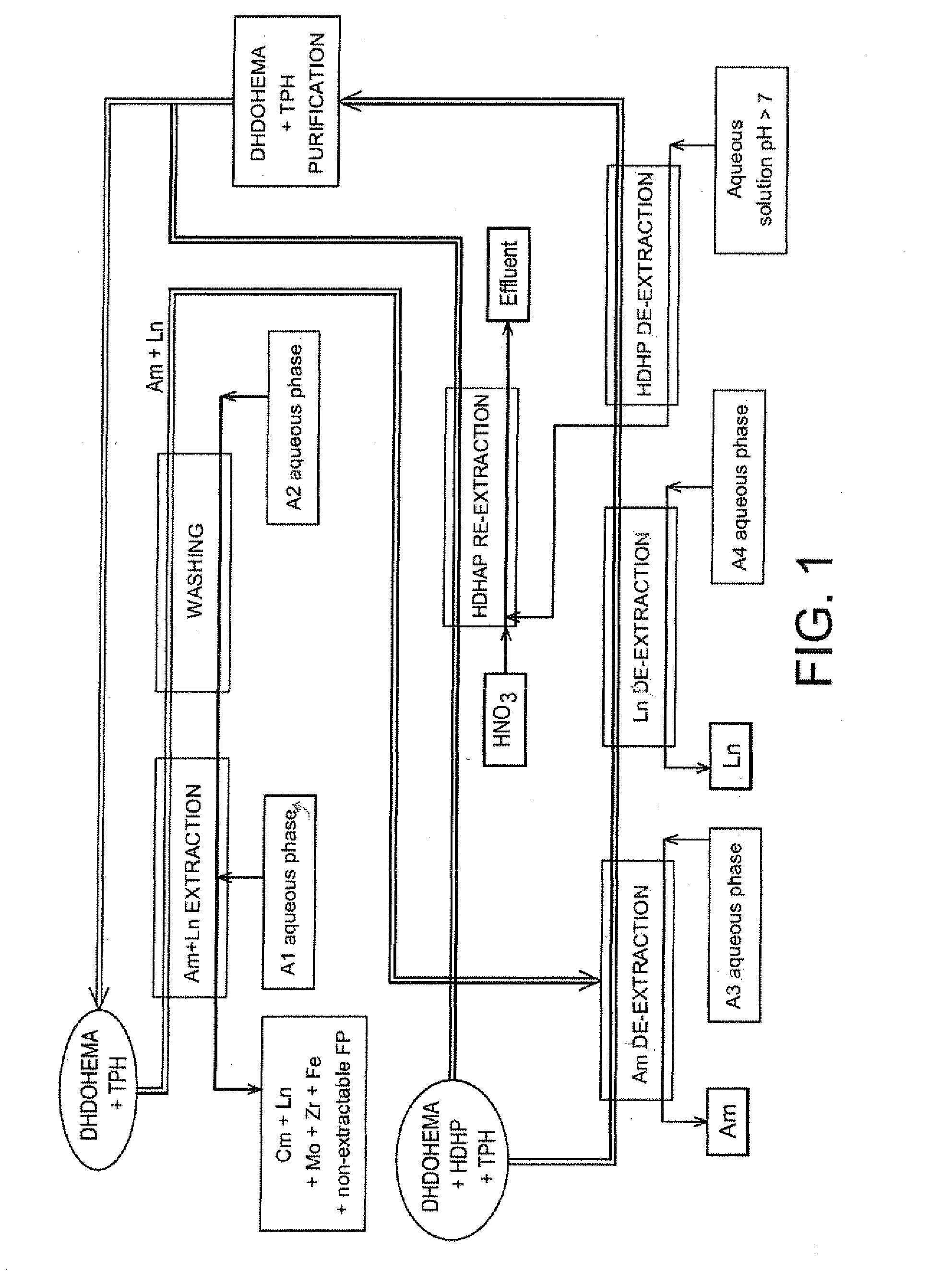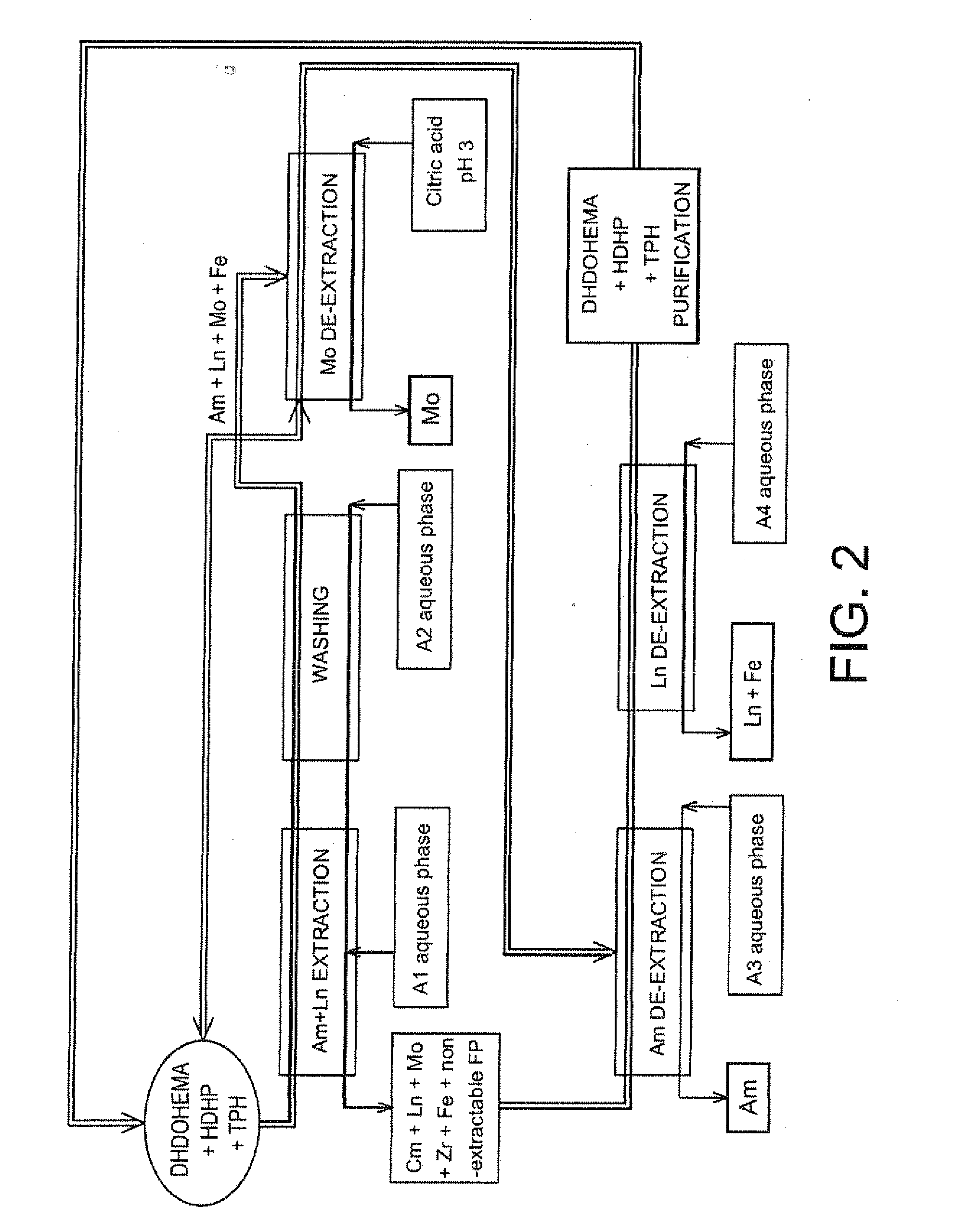Method for selectively recovering americium from a nitric aqueous phase
a technology of americium and aqueous phase, which is applied in the direction of greenhouse gas reduction, nuclear elements, nuclear engineering, etc., can solve the problems of reducing loading capacity, reducing separation factor, and no longer considering the application of talspeak downstream from purex or coexTM, so as to achieve the effect of enhancing separation factor and enhancing separation factor
- Summary
- Abstract
- Description
- Claims
- Application Information
AI Technical Summary
Benefits of technology
Problems solved by technology
Method used
Image
Examples
example 1
Detailed Discussion of a First Exemplary Embodiment of the Method of the Invention
[0132]Reference is made to FIG. 1 which schematically illustrates a first exemplary embodiment of the invention, designed in order to process, on an industrial scale a raffinate stemming from the first purification cycle of a PUREX or COEX™ method with view to selectively recovering the americium present in this raffinate.
[0133]The latter, designated hereafter and in FIG. 1 by A1 aqueous phase, consists in an aqueous solution with strong nitric acidity, which contains americium, curium, lanthanides (La, Ce, Pr, Nd, Sm, Eu, Gd, fission products other than lanthanides (Mo, Zr, Ru, Rd, Pa, Y, . . . ) as well as other metal elements which are neither lanthanides nor fission products such as iron and chromium.
[0134]On the other hand, it is free of uranium, plutonium and neptunium or, if any of these elements is present, it is only present in trace amounts, i.e. with a mass content of less than about 0.30%.
[...
example 2
Detailed Discussion of a Second Exemplary Embodiment of the Method of the Invention
[0166]Reference is now made to FIG. 2 which schematically illustrates a second exemplary embodiment of the method of the invention, which is also designed for treating on an industrial scale a raffinate stemming from the first purification cycle of a PUREX or COEX™ method with view to selectively recovering the americium present in this raffinate, but in which the acid extractant is present in the organic phase in all the steps of the method.
[0167]Also, in this second example, each cycle of the method comprises the following six steps:
[0168]1) extracting americium and a part of the lanthanides present in the A1 aqueous phase with an organic phase containing both the solvating extractant and the acid extractant;
[0169]2) washing the organic phase stemming from this extraction;
[0170]3) selectively de-extracting the molybdenum from the organic phase stemming from this washing;
[0171]4) selectively de-extra...
example 3
Validation of Examples 1 and 2
[0189]In the following, the distribution coefficients of the metal elements were determined:[0190]in the case of americium and curium, by calculating the ratio of the activity of these elements in a given organic phase to the activity of these same elements in the aqueous phase having been put into contact with this organic phase;[0191]in the case of the other metal elements, by calculating the difference between the initial and final concentrations of these elements in a given aqueous phase, and by calculating the ratio between this difference and the initial concentration of these same elements in this same aqueous phase.
[0192]All the measurements of activity of americium and curium were carried out by α spectrometry while all the measurements of concentration of the other metal elements were carried out by atomic emission spectrometry with an inductively coupled plasma, also known under the acronym of ICP-AES.
[0193]30
[0194]1) Validation of the First ...
PUM
| Property | Measurement | Unit |
|---|---|---|
| pH | aaaaa | aaaaa |
| temperature | aaaaa | aaaaa |
| constant temperature | aaaaa | aaaaa |
Abstract
Description
Claims
Application Information
 Login to View More
Login to View More - R&D
- Intellectual Property
- Life Sciences
- Materials
- Tech Scout
- Unparalleled Data Quality
- Higher Quality Content
- 60% Fewer Hallucinations
Browse by: Latest US Patents, China's latest patents, Technical Efficacy Thesaurus, Application Domain, Technology Topic, Popular Technical Reports.
© 2025 PatSnap. All rights reserved.Legal|Privacy policy|Modern Slavery Act Transparency Statement|Sitemap|About US| Contact US: help@patsnap.com



